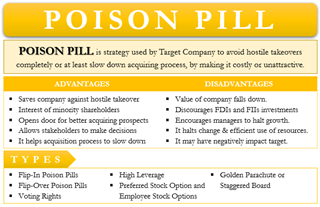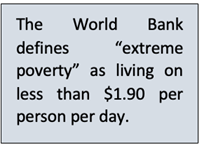Thursday, 21st April 2022
New NBFC Regulations
In News
In yet another move to close the regulatory gap between banks and shadow banks, the Reserve Bank of India (RBI) has mandated exposure limits to the non-banking finance companies, in line with commercial banks.
About the News
- Group exposure limit determines the maximum amount a bank can lend to one business house. This is done to prevent the troubles at entity having a spillover effect on the bank which could lead to a systemic risk.
- The new rules set the exposure limit for NBFCs as follows:

- In case of breach of the large exposure limits, the NBFCs have to report to the department of supervision of RBI, thus being barred from undertaking any further exposure (at the entity or group level) until it is down within the limit.
- The RBI has also warned that any failure to comply with the exposure limit may lead to imposition of penalties on the NBFCs.
Significance of the move:
- In the wake of the many defaults seen in the shadow banking space (like IL&FS crisis), RBI has been harmonising regulations between the NBFCs and the banks.
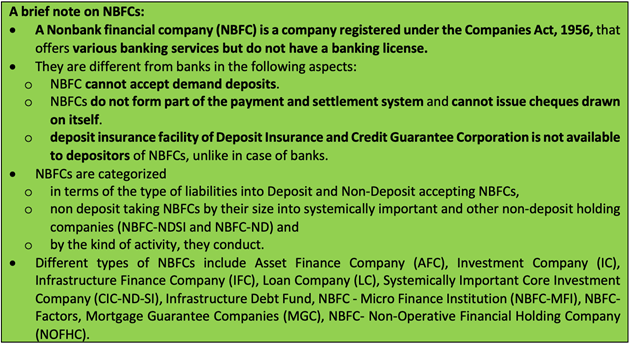
-
- RBI had come out with scale-based regulations for the NBFC sector, wherein large NBFCs will be subjected to greater scrutiny akin to that of the banks.
- The recent move by the RBI will harmonize regulations for upper-layer non-banks, commercial banks and co-operative banks, leaving little room for arbitrage.
- Without the cap on exposure, there was an inherent credit risk associated with loans given by NBFCs.
- The rules will help avoid concentration of risk and insulate lenders from shocks owing to failure of any large borrower account.
- By creating a large exposure framework, RBI is also prodding large borrowers to tap funds from the markets instead of solely relying on bank loans.
- Since market exposures will be in the form of tradeable securities, the price discovery of an asset is better, as markets react faster than the banking sector on fresh information about a company.
- The move to bring NBFCs on par with banks on large exposures, and a string of other measures by the central bank, have also led to speculation that the sector may enter a phase of consolidation.
Sources:
Ceasefire with Naga groups
In News
The Central government has extended the ceasefire pact with 3 Naga groups by a year.
About the News
- Ministry of Home Affairs has extended the ceasefire agreements from April 28, 2022 to April 27, 2023 with NSCN/NK and NSCN/R and from April 18, 2022 to April 17, 2023 with NSCN/K-Khango.
- In 1946 came the Naga National Council (NNC) under the leadership of Angami Zapu Phizo, declared Nagaland an independent state on August 14, 1947 and resolved to establish a “sovereign Naga state” and conducted a “referendum” in 1951, in which “99 per cent” supported an “independent” Nagaland.
What is Naga issue?
- History: The British annexed Assam in 1826, and in 1881, the Naga Hills too became part of British India. The first sign of Naga resistance was seen in the formation of the Naga Club in 1918, which told the Simon Commission in 1929 “to leave us alone to determine for ourselves as in ancient times”.
- Armed movement: Phizo formed the underground Naga Federal Government (NFG) and the Naga Federal Army (NFA). The Government of India sent in the Army to crush the insurgency and, in 1958, enacted the Armed Forces (Special Powers) Act.
- Peace efforts: Almost simultaneously with the resistance, Michael Scott formed a Peace Mission, and got the government and NNC to sign an agreement to suspend operations.
- NSCN: In 1975, the government got a section of NNC leaders to sign the Shillong Accord, under which this section of NNC and NFG agreed to give up arms.
- Factions: A group of about 140 members led by Thuingaleng Muivah, who were at that time in China, refused to accept the Shillong Accord, and formed the National Socialist Council of Nagaland in 1980.
- Split: In 1988, the NSCN split into NSCN (IM) and NSCN (K) after a violent clash. While the NNC began to fade away, and Phizo died in London in 1991, the NSCN (IM) came to be seen as the “mother of all insurgencies” in the region.
- Demand of NSCN (IM): A “Greater Nagalim” comprising “all contiguous Naga-inhabited areas”, along with Nagaland and several districts of Assam, Arunachal and Manipur, as well as a large tract of Myanmar.
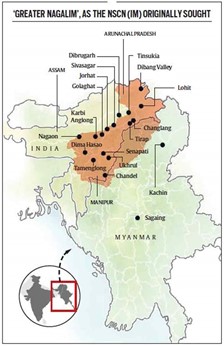
What are the major highlights of the agreement?
- About: The government had signed a framework agreement with the major Naga group NSCN-IM on August 3, 2015 in presence of Prime Minister of India.
- The framework agreement came after over 80 rounds of negotiations spanning 18 years, with the first breakthrough made in 1997 when the ceasefire agreement was sealed after decades of insurgency in Nagaland which started soon after India's Independence in 1947.
- However, the talks with the NSCN-IM are currently going nowhere as the group has been insisting for a separate Naga flag and constitution, a demand rejected by the central government.
- The vague wordings of the Framework Agreement and the Centre's stand on issues of separate constitution and flag for any region in the country after August 5, 2019 decisions on J&K has pushed the Naga Peace process into a stalemate.
- Groups: The groups include National Socialist Council of Nagaland-NK (NSCN-NK), National Socialist Council of Nagaland-Reformation (NSCN-R) and National Socialist Council of Nagaland-K-Khango (NSCN-K-Khango).
Sources:
“Noise” pollution
In News
There has been a political controversy in Maharashtra over the demand to remove loudspeakers from mosques which has given rise to some fundamental questions regarding noise pollution.
About the News
- For this, the Maharashtra government is relying on provisions of the Noise Pollution (Regulation and Control) Rules, 2000 to negotiate the controversy over the use of loudspeakers by mosques.
- The Noise Pollution (Regulation and Control) Rules, 2000:
- Section 2 (a) of the Air (Prevention and Control of Pollution) Act, 1981 includes noise in the definition of ‘air pollutant’.
- Noise pollution and its sources are regulated under the Noise Pollution (Regulation and Control) Rules, 2000 under The Environment (Protection) Act, 1986.
- The Act has defined ambient acceptable noise levels, silence zones, restrictions on the use of loudspeakers, horns, sound-emitting construction equipment, and bursting of crackers.
- It has also laid down the responsibility for enforcement.
What constitutes ‘noise’ under the law?
- As per the Central Pollution Control Board’s mandate for noise pollution, ‘noise’ is defined as unwanted sound.
- Threshold for acceptable level of noise: Noise pollution Rules have defined the acceptable level of noise in different zones for both daytime and nighttime.
- In industrial areas, the permissible limit is 75 decibels (unit of sound; tenth of a ‘bell’, symbol dB) for daytime (6 am to 10 pm), and 70 dB for night (10 pm to 6 am).
- In commercial areas, these ceilings are fixed at 65 dB and 55 dB, while in residential areas they are 55 dB and 45 dB during daytime and night respectively.
- In silence zones, i.e., an area comprising not less than 100 metres around hospitals, educational institutions and courts, it is 50 dB in the daytime and 40 dB during the night.
The Rules around the use of loudspeakers
- The noise level at the boundary of the public place, where a loudspeaker or public address system or any other noise source is being used, shall not exceed 10 dB (A) above the ambient noise standards for the area or 75 dB (A), whichever is lower.
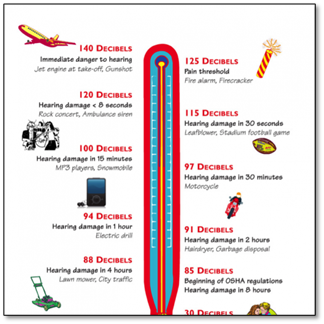
- A loudspeaker or a public address system shall not be used except after obtaining written permission from the designated authority.
- The state government can provide exemption during any cultural or religious festive occasion of a limited duration not exceeding 15 days in all during a calendar year.
- The violation of norms regarding the use of loudspeakers/public address systems can result in seizure of the equipment, and a fine of Rs 10,000.
For Article related to this topic, refer: https://edukemy.com/current-affairs/gazette/2022-03-14/unep-frontiers-2022-report-noise-blazes-and-mismatches
Source:
Image source:
First Battle of Panipat
On April 21, 1526 the first Battle of Panipat was fought between the invading forces of Babur and the Lodi Empire. The Mughal forces of Babur, the Timurid ruler of Kabulistan, defeated the much larger ruling army of Ibrahim Lodi, Sultan of Delhi. It marked the beginning of the Mughal Empire. This was one of the earliest battles involving gunpowder firearms and field artillery. The new war tactics introduced by Babur were the tulughma and the araba. Tulughma meant dividing the whole army into various units, viz. the Left, the Right and the Centre. The Left and Right divisions were further subdivided into Forward and Rear divisions. Through this a small army could be used to surround the enemy from all the sides. The Centre Forward division was then provided with carts (araba) which were placed in rows facing the enemy and tied to each other with animal hide ropes. These two tactics made Babur’s artillery lethal. The guns and cannons could be fired without any fear of being hit as they were shielded by the bullock carts which were held in place due to the hide ropes holding them together.
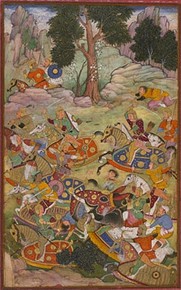
On April 21, India celebrates National Civil Services day. For more details on this day, refer: https://edukemy.com/current-affairs/gazette/2021-04-21/national-civil-services-day
Source:
Bangladesh-Bhutan-India-Nepal (BBIN)
In News
The BBIN countries finally took a step forward towards realising the BBIN agreement to achieve connectivity aspirations.
About the News
- The much-anticipated Bangladesh-Bhutan-India-Nepal (BBIN) motor vehicles agreement took a step forward recently with stakeholder countries congregated to actualise one of the long-pending connectivity aspirations of South Asia.
- The meeting had put on the table a very crucial issue of commencing seamless passenger and cargo protocols for the regulation of passenger, personal and cargo vehicular traffic between the four respective countries, as had been signed in
- Bhutan’s attendance for the discussion was only as an observer Bhutan had previously opted out of the agreement because of its own issues of environment conservation, which it felt could be endangered by such a project.
About the BBIN
- About: The Bangladesh-Bhutan-India-Nepal Motor vehicles agreement was signed in 2015 in Thimphu and the accord was seen as a significant symbol of sub-regional unity.
- Aim: It enables vehicles to enter any of the four nations without the need for trans-shipment of goods from one country's truck to another's at the border.
- Benefits: Signing of the BBIN agreement will promote safe, economical efficient and environmentally sound road transport in the sub-region and will further help each country in creating an institutional mechanism for regional integration.
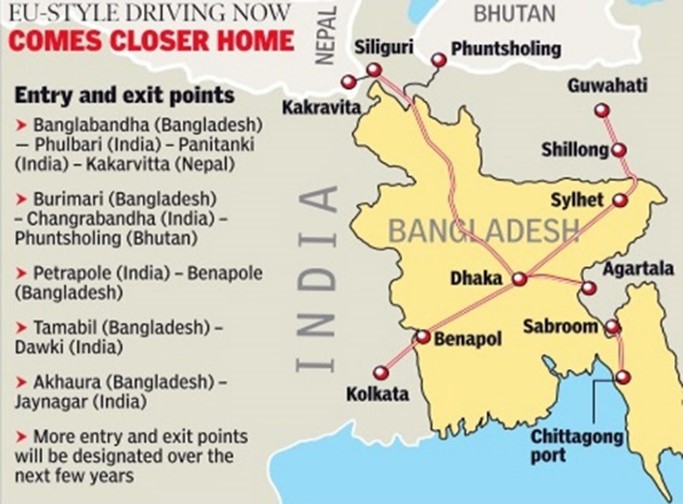
Why BBIN is important?
- Cut red tape:
- Reduce delays: Cutting down the physical inspection of goods can reduce delays. At some borders, customs officials examine 80-100 percent of all the goods that pass through. If countries adopted advanced risk management practices, consignments could be cleared far more quickly.
- Time efficient: Early implementation of the BBIN Motor Vehicles Agreement (MVA) can lead to shorter transport routes, quicker travel times, and lower costs, in addition to a smaller carbon footprint. World Bank analysis finds that under the MVA, a truck traveling from Agartala in India’s north east to Kolkata port will take 65 percent less time and be 68 percent cheaper.
- Cutting trade cost: OECD data shows that if countries in the region were to fully implement the WTO Trade Facilitation Agreement (TFA) - which aims to simplify paperwork and harmonize customs procedures - trade costs for lower middle-income economies such as the BBIN nations could come down by over 17 percent.
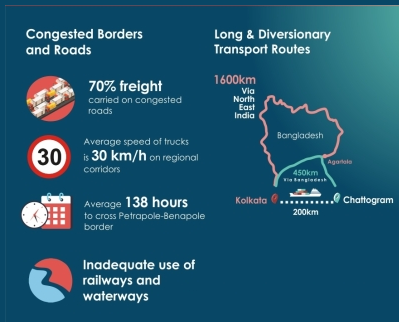
- Digitize, Automate:
- Improved transparency: The digitization and automation of customs and other procedures can also lead to faster and more transparent clearances.
- Better harmonization: Digitization has the added advantage of enabling countries to harmonize their data, facilitating data exchanges and allowing traders and government officials to take evidence-based decisions.
- Faster clearance: Single electronic gateways will allow importers and exporters to file their documents electronically. Once fully operational, these National Single Windows are expected to dramatically reduce clearance times.
- Economic benefits:
- Reducing complexity: It will lead to upgrading procedures for cargo handling, storage, tariff calculation and payment at border points which will ease the complexity of cross-border trade.
- Increased income: In Bangladesh, seamless connectivity with India can raise national income by as much as 17 percent, while India would gain by 8 percent.
- Bridge Infrastructure Gaps: an integrated multimodal transport network will go far in promoting the smoother movement of goods.
- Gateway to South-east: The implementation of the agreement is expected to improve the value chain in sub-regional trade. It is expected to become the gateway to southeast and east Asia.
- Tourism potential: Through NNIN, all the four countries can take the full advantage of ‘tourism potential’ with rich natural and cultural attractions, including many of the world’s major Buddhist sites.
- Countering China: It will help in countering Chinese aspirations which has tried to focus on the tourism sector in South Asia with the help of the Belt and Road Initiative (BRI).
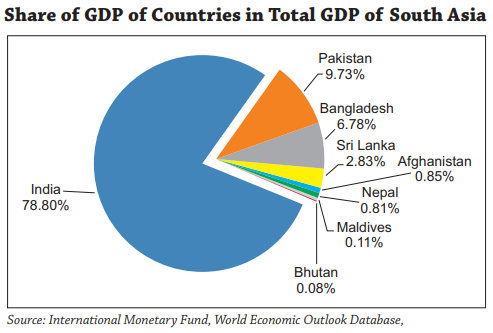
What are the Challenges to BBIN project?
- Infrastructure gaps:
- Limited movements: At the moment, large gaps remain even within nations, multimodal freight operations are limited; this is even less so for cross-border movement.
- Mismatch: There is mismatch in handling capacity between the various check posts across countries. For example, while India’s Petrapole border can handle up to 750 trucks a day, Bangladesh’s Benapole point on the other side can only clear 370 of them.
- Dominance of India:
- Skewed trade balance: India is a dominant member of BBIN with almost 90 per cent trade volume in its favour and thus other countries in the group may not have their priorities completely aligned with India.
- Difference in objectives: Countries like Bhutan often puts its emphasis on maintaining its leading rank in the gross national happiness index over economic growth. Consequently, there have been some reservations in Bhutan about free movement of cargo and people within the sub-region.
- Political issues:
- Issue of illegal migrants: Within the BBIN countries there are political problems and issues of mistrust. For example, India is facing problem of illegal Bangladeshi migrants which has been a political hot potato for many years.
- Trade blockade: India and Nepal experienced a political standoff where Nepal accused India of creating trade blockages.
- Threat to informal economy: Local issues may rise as any attempt to streamline trans movement will be resisted by economic agents who are essentially rent-seekers who have gained from the non-transparency and inadequacy of the system.
What can be done?
- Improving logistics:
- Rails and inland waterways: There is need for stronger efforts to move freight onto rail networks and inland waterways to make the most of the multimodal nature of marine containers.
- Capacity building of roads: Roads too needs attention as although roads carry around 70 percent of the freight on these regional corridors, most are crowded two-lane thoroughfares where trucks travel at 30 kilometers per hour or less, and some sections are incapable of carrying larger vehicles or containers.
- Incorporating stakeholders:
- Calculative approach: For the BBIN initiative to achieve success, it is important to calibrate the speed and level of its ambitions.
- Improving heterogeneity: It must be recognised that even within the BBIN group there is significant heterogeneity in terms of economic size and level of economic development. Therefore, the political objectives and policy priorities of these countries might be very different.
- National security: With national security issues increasingly becoming an area of major concern, the long-term acceptability and success of BBIN will depend on how well these challenges are taken up within the framework.
Way Forward
The BBIN initiative is a welcome sub-regional integration project for India as it allows India to bypass Pakistan and discuss connectivity issues with Bhutan, Bangladesh and Nepal, which has proved difficult at the SAARC level. Besides it integrating well with India's 'Look East Policy', this initiative can also solve India's longstanding problem of locational disadvantage and poor connectivity of its north-eastern states. Thus, BBIN initiative fits well with the new wave of developing massive transnational road and rail connectivity networks. All these will facilitate intra- and inter-regional trade in goods and services. It may also help develop sub-regional and regional value chains, which can be further integrated with global production networks.
Question: The BBIN initiative is a boon to India’s regional connectivity ambitions. But this initiative comes with its set of challenges. Elaborate.
SOURCES:
Martian sunrise
This is image Martian dawn on the plains of Elysium Planitia, captured by the InSight rover. Elysium Planitia is the second largest volcanic region on Mars. Elysium Mons is the largest volcano in this region. InSight (Interior Exploration using Seismic Investigations, Geodesy and Heat Transport, is a Mars lander which is the first robotic explorer to study the crust, mantle and core of Mars.

The InSight rover has two primary science objectives: to understand the formation and evolution of the terrestrial planet by investigating the interior structure and processes of Mars and to determine the present level of tectonic activity and meteorite impact rate on the planet. In comparison with other planets that could be too small or too large, Mars preserves the record of its formation and can give insights into how the planet formed. This makes it the perfect laboratory from which to study the formation and evolution of rocky planets.
Sources:
Building blocks of DNA in meteorites
This is image of Murchison meteorite. Japanese planetary scientists studying three carbon-rich meteorites have suggested a crucial link between the building blocks of life on Earth and asteroids. The researchers propose that materials required for the building blocks of life were likely deposited on earth by carbon-rich asteroids as meteorites. The scientists have confirmed the presence of all five primary nucleobases in the three meteorites. These nucleobases — indicated by the letters G, C, T, A, and U — make up all DNA and RNA.
The three meteorites studied were the Murchison meteorite (Australia, 1969), Tagish Lake meteorite (Canada, 2000), and Lake Murray meteorite (USA, 1933). Nucleobases are biological compounds containing nitrogen that form the basis for nucleic acids — ribonucleic acid (RNA) and deoxyribonucleic acid (DNA). Nucleic acids are essential components for life as we understand it.

Source:
Ayush Visa
- Context: The Prime Minister has recently announced that the Centre would soon introduce a special category visa-Ayush visa.
- It is a special category visa for foreigners arriving in India for treatment under Ayush methods that include Ayurveda, Yoga, Naturopathy, Unani, Siddha and Homoeopathy, among others.

- This would help them take advantage of traditional medicine, as part of India’s initiatives to promote medical tourism.
- “Heal-in-India” is being aimed at for which the Government has taken such an initiative, which will increase the ease of people to commute for Ayush related treatment.
- Along with this, an ‘Ayushmark’ is also being developed which will be stamped on products to give an assurance of high quality globally.
- This will complement the Make in India Initiative and simultaneously symbolize India’s products of high global standards.
Source:
- India to introduce special visa category for Ayush Treatment
- PM Modi: Ayush visa will be introduced for foreigners who want to come to India for traditional treatments
Image source:
‘INS Vagsheer’
- Context: India’s defence naval fleet has recently received ‘INS Vagsheer’ at Mazagon Dock in Mumbai.
- INS Vagsheer is a Scorpene-class submarine under Project-75 of the Indian Navy.
- P 75 is one of two lines of submarines, the other being P75I, for indigenous submarine construction with technology taken from overseas
- Under P75, INS Kalvari, INS Khanderi, INS Karanj and INS Vela have been commissioned. Sea trials are on for Vagir and Vagsheer is the sixth in line.
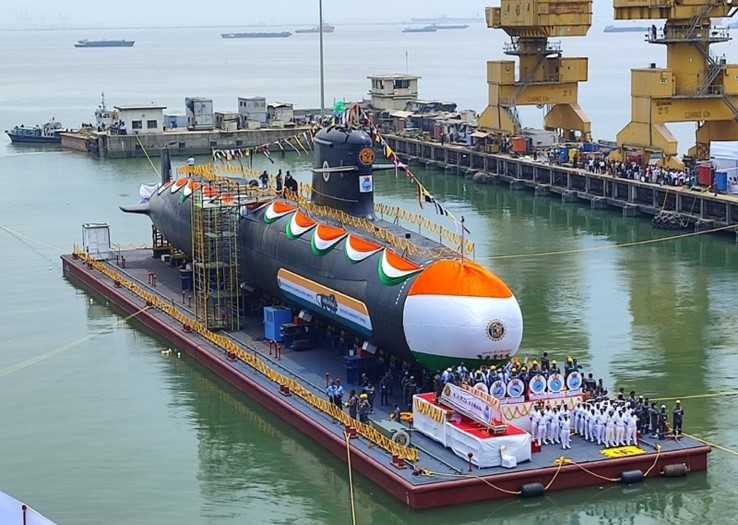
- Vagsheer is named after the sand fish, a deadly deep-sea predator of the Indian Ocean.
- The first submarine Vagsheer, from Russia, was commissioned into the Indian Navy in 1974, and was decommissioned in 1997.
- It is a diesel attack submarine which is 67.5 metres long and 12.3 metres high, designed to perform sea denial as well as access denial warfare against the adversary.
- It can do offensive operations across the spectrum of naval warfare including anti-surface warfare, anti-submarine warfare, intelligence gathering, mine laying and area surveillance.
- Its superior stealth features include advanced acoustic absorption techniques, low radiated noise levels, hydro-dynamically optimised shape, and it has the ability to launch a crippling attack using precision guided weapons, underwater or on surface.
Source:
- Explained: Submarine Vagsheer and its features, capabilities
- India gets its sixth Scorpene-class submarine ‘INS Vagsheer’ in Mumbai
Image source:
Utsav Portal
- Context: Ministry of Tourism, Culture has recently launched the “Utsav Portal”.
- Utsav Portal is a digital initiative launched to showcase Live Darshan, festivals, and events across India.
- The portal aspires to promote tourism across different regions of the country and popularise them as famous tourist destinations in future.
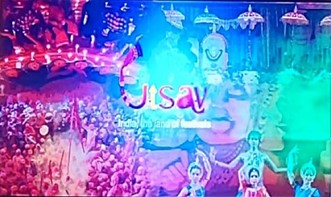
- It aims to showcase important elements of events such as date, time, proceedings, location and will also exhibit different festivals of India with an intent to attract a global audience and increase awareness about India’s tourism opportunities.
- The website will provide visitors with a stellar digital experience in the form of appealing photographs and stills from iconic events.
- Devotees and religious travellers will also have an opportunity to view and experience divine shrines of India from all parts of the country in the comfort of their homes.
- Utsav Portal website will also possess social media links, event-specific website information, brochures and contact details about the organizing committee and routing information needed to reach event destinations.
- This will enable visitors to seek and attend upcoming events.
Source:
- Shri G. Kishan Reddy launches the Utsav Portal at the inaugural day of Amrit Samagam Conference
- “Utsav Portal” launched by Hon’ble Minister of Tourism, Culture and DoNER at Amrit Samagam Conference, April 2022
Image source:
Chennakeshava temple
- Context: Despite opposition from Right-wing activists, Chennakeshava temple has continued with its age-old tradition of kicking off the rathotsava (chariot festival) after reciting passages from the Quran.

- According to the tradition, a maulvi reads out excerpts from the Quran to mark the beginning of the celebrations at the temple.
- The 'Rathotsav' ceremony at the Belur temple is performed for two days.
- The idol of Channakeshava is embellished with gold and diamond jewels gifted by the erstwhile kings of the Mysuru kingdom and lakhs of devotees visit Belur during this temple fair.
- Chennakeshava Temple, also referred to as Keshava, Kesava or Vijayanarayana Templeof Belur, is a 12th-century Hindu temple in the Hassan district of Karnataka.
- It was commissioned by King Vishnuvardhana in 1117 CE.
- The temple was built over three generations and took 103 years to be completed. It was repeatedly damaged and plundered during wars, repeatedly rebuilt and repaired over its history.
- It is a fine example of fine quality work of art in stone and shows Hoysala workmanship.
Source:
- Karnataka: Belur temple continues tradition of kicking off festival with Quran recitation
- Karnataka temple keeps alive tradition of starting festival with Quran recitation
Image source:
Due process lies at heart of citizens’ rights, freedoms: Indian Express
Essence: As per the author, the demolition drive at Jahangirpuri continued even after the Supreme Court ordered them to pause for over an hour. Bylaws say that only temporary structures on public lands can be demolished without notice, however what is temporary and what is not needs to be settled as per due process. This due process is not followed in this case.
As per the author, this kind of violation of the due process affects all citizens and goes against the constitutional promise to protect lives and safeguard rights. Thus, illegal encroachments need to be addressed as per the law and the Supreme Court must address this principle at the earliest.
Why should you read this article?
- To know about the sequence of events at the Jahangirpuri demolition drive in northwest Delhi.
- To know about the due process to be followed in a demolition drive.
- To know about the consequences of such a violation of due process.
Source:
Don’t rush into export ‘opportunity’ presented by Russia-Ukraine conflict: Indian Express
Essence: The editorial provides insight into the possibility of wheat export from India due to war crisis. The common argument being presented is that wheat surplus could be exported and could fetch additional gains for agriculture sector.
However, India needs to plan its wheat export well as limitations to wheat export are far many than its advantages- the wheat stocks are marginal and fragile, food inflation is rising (political appetite for opposition), respecting international trading pacts during times when production won’t be as good, etc. Container handling cost, logistics movement charge render our wheat expensive and remove the competitive advantage.
India must focus on increasing the quality of product, access newer markets and innovation in products than hastily exporting wheat considering it a short-term advantage.
Why should you read this article?
- To understand the shortcomings of wheat export.
- To know the trading disadvantage in India with respect to exporting products.
Source:
Unfounded apprehensions about this act: The Hindu
Essence: The editorial talks about the objectives of the Criminal Procedure (Identification) Act and explains how it is in alignment with the Constitutional norms. The idea has been to facilitate the identification and investigation in criminal matters. The scope of measurements has been expanded in the act by only combining the terms mentioned in the previous Identification of Prisoners Act and CrPC. The scope of medical examination of the accused has been a part of Law Commission recommendations. There are no controversies regarding scientific techniques like polygraphy, narcoanalysis, etc. as they do not fall under procedures. Under the Act, data for all persons convicted would be collected. However, biological data for petty offenses won’t be collected and would be in proportion to the crime committed. Provision of better technology will only help in faster and effective rendering of justice.
Why should you read this article?
- To understand the intricacies of CPA and the advantages of its coming to existence.
Source:
Super Teacher
Background
Kanchan Sharma, a Jammu-based retired teacher, has made it her mission to empower disadvantaged children by offering them free education through her open school.

About Super Teacher Kanchan Sharma
- Kanchan Sharma, 61, is a retired lecturer in Jammu who provides free education to children from slums in the Maratha Basti. She is known as 'Super Teacher.'
- Since 2009, she has been educating poor children in her improvised open school, 'Sangarh Vidya Kendra,' by holding a two-hour lesson once a week.
- She funded the school with her own money and persuaded the parents of the students to enrol their children.
- Kanchan continues to pay for teacher salaries as well as costs such as stationery and uniforms out of her own pocket.
- According to her, “If we give these children clothes, they will tear them, and if we give them food, they will become hungry once more. Education is the only way these children can buy their clothes and live a respectable life in society,"
Quote: Education is the passport to the future, for tomorrow belongs to those who prepare for it today. – Malcolm X
Source:
Share the article
Get Latest Updates on Offers, Event dates, and free Mentorship sessions.

Get in touch with our Expert Academic Counsellors 👋
FAQs
UPSC Daily Current Affairs focuses on learning current events on a daily basis. An aspirant needs to study regular and updated information about current events, news, and relevant topics that are important for UPSC aspirants. It covers national and international affairs, government policies, socio-economic issues, science and technology advancements, and more.
UPSC Daily Current Affairs provides aspirants with a concise and comprehensive overview of the latest happenings and developments across various fields. It helps aspirants stay updated with current affairs and provides them with valuable insights and analysis, which are essential for answering questions in the UPSC examinations. It enhances their knowledge, analytical skills, and ability to connect current affairs with the UPSC syllabus.
UPSC Daily Current Affairs covers a wide range of topics, including politics, economics, science and technology, environment, social issues, governance, international relations, and more. It offers news summaries, in-depth analyses, editorials, opinion pieces, and relevant study materials. It also provides practice questions and quizzes to help aspirants test their understanding of current affairs.
Edukemy's UPSC Daily Current Affairs can be accessed through:
- UPSC Daily Current Affairs can be accessed through Current Affairs tab at the top of the Main Page of Edukemy.
- Edukemy Mobile app: The Daily Current Affairs can also be access through Edukemy Mobile App.
- Social media: Follow Edukemy’s official social media accounts or pages that provide UPSC Daily Current Affairs updates, including Facebook, Twitter, or Telegram channels.

